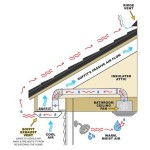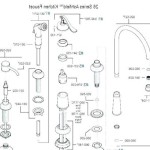Building Code for Bathroom Ventilation: Ensuring Health and Safety
Bathroom ventilation is crucial for maintaining a healthy and safe living environment. Dampness, mold growth, and unpleasant odors can quickly become problems without proper ventilation. As such, building codes have been established to ensure adequate ventilation in bathrooms, protecting both the occupants and the structure itself. Understanding these codes is essential for homeowners, contractors, and building inspectors alike.
Understanding the Importance of Bathroom Ventilation
Bathroom ventilation plays a vital role in controlling moisture levels, improving air quality, and preventing potential health hazards. Here's why it's critical:
-
Moisture Control:
Bathrooms are inherently humid environments due to showers, baths, and general use. Without proper ventilation, moisture can accumulate, leading to condensation on surfaces, dampness, and the growth of mold and mildew. These issues can damage building materials, compromise the structural integrity of the bathroom, and contribute to allergy and respiratory problems. -
Air Quality:
The presence of moisture and the use of cleaning products in bathrooms can create poor air quality. Ventilation helps to remove these airborne contaminants, improving the quality of the air breathed by occupants. -
Odor Removal:
Bathroom ventilation is essential for removing unpleasant odors associated with bathroom use. This improves hygiene and creates a more pleasant living environment.
Key Elements of Building Codes for Bathroom Ventilation
Building codes typically mandate various aspects of bathroom ventilation, including:
1. Exhaust Fan Requirements
The most common ventilation component in bathrooms is an exhaust fan. Building codes dictate the minimum fan size, airflow capacity, and location. The fan's performance is generally measured in cubic feet per minute (CFM). Minimum CFM requirements vary depending on the size of the bathroom, but generally, they are:
-
50 CFM:
For bathrooms up to 50 square feet -
60 CFM:
For bathrooms between 50 and 75 square feet -
80 CFM:
For bathrooms between 75 and 100 square feet
The location of the exhaust fan is also important. It should be positioned to effectively draw moisture and odors away from the shower or tub, and it should be ducted to the outside of the building.
2. Window Ventilation
In some cases, building codes may allow for natural ventilation using windows. This is typically considered acceptable for smaller bathrooms with adequate window size and placement. The window must be able to provide a certain amount of airflow, and it should be readily operable by the occupants. Natural ventilation may require an additional exhaust fan for certain situations, such as bathrooms with bathtub surrounds or showers that generate significant moisture.
3. Continuous Ventilation
Building codes sometimes specify continuous ventilation requirements, particularly in commercial settings or multi-residential buildings. These requirements often involve mechanical ventilation systems that continuously circulate air, ensuring consistent ventilation even when the bathroom is not in use.
Compliance and Inspections
Building inspectors are responsible for verifying compliance with ventilation codes during construction or renovation projects. They will check the size and performance of exhaust fans, the location and functionality of windows, and the overall ventilation system design. Homeowners should ensure that their bathroom ventilation system meets the applicable building codes and that the ventilation system is inspected and approved by a qualified inspector.
Failing to meet building code requirements for bathroom ventilation can result in code violations and fines. It can also lead to serious health and safety issues, such as mold growth, respiratory problems, and potential structural damage. Therefore, it's crucial to prioritize proper bathroom ventilation throughout the design, construction, and maintenance phases of any building project.

Code Requirement For Bathroom Vent Location Exhaust Checkthishouse

Bathroom Regulations Vent Axia

Learn Rules For Bathroom Design And Code Fix Com

Plumbing Vents The Ultimate Guide Hammerpedia

We All Like To Vent Dealing With The Hot And Moist Air Ncw Home Inspections Llc

Bathroom Ventilation Requirements Air Cool Contractors

How To Vent A Toilet Sink And Shower Drain

3 Bathroom Exhaust Fan Venting Options Codes

Can A Bathroom Fan Vent Into The Attic Code Explained Building Trainer

Bathroom Exhaust Fans Building America Solution Center
Related Posts







